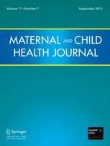|
Medicine by Alexandros G. Sfakianakis,Anapafseos 5 Agios Nikolaos 72100 Crete Greece,00302841026182,00306932607174,alsfakia@gmail.com,
Αρχειοθήκη ιστολογίου
-
►
2023
(272)
- ► Φεβρουαρίου (141)
- ► Ιανουαρίου (131)
-
►
2022
(2066)
- ► Δεκεμβρίου (80)
- ► Σεπτεμβρίου (170)
- ► Φεβρουαρίου (190)
- ► Ιανουαρίου (203)
-
►
2021
(7399)
- ► Δεκεμβρίου (186)
- ► Σεπτεμβρίου (472)
- ► Φεβρουαρίου (851)
-
▼
2020
(2517)
-
▼
Δεκεμβρίου
(792)
-
▼
Δεκ 01
(50)
- Influence of exogenous and endogenous estrogen on ...
- Visual imagery influences attentional guidance dur...
- General Characteristics of Microbubble-Adenovirus ...
- Transitional nystagmus in a Bow Hunter’s Syndrome ...
- Enablers and Barriers to Identifying Children at R...
- In Silico Ventilation Within the Dose-Volume is Pr...
- Analyzing Liver Surface Indentation for In Vivo Re...
- Brain Strain: Computational Model-Based Metrics fo...
- The Dysregulation of OGT/OGA Cycle Mediates Tau an...
- Discovery of Isoform p53 Protein in Failed Cases o...
- Tumor stiffness measured by shear wave elastograph...
- Evaluating the Tubridge™ flow diverter for large c...
- Έκθεση αξιολόγησης του πρωτοκόλλου PCR-RT Corman-D...
- Arteriovenous malformation in the pancreatic head ...
- Bioelectrical impedance analysis for perioperative...
- A hypoenergetic diet with decreased protein intake...
- Epidemiology of pediatric femur fractures in child...
- Use of an Alternative Pathway for Isoleucine Synth...
- Assessment of the Biotechnological Potential of Cy...
- New Recombinant Phytase from Kosakonia sacchari : ...
- Obtainment and Characteristics of Phytoecdysteroid...
- Effect of Virus-Inactivating Agents on the Immunog...
- Prospects for the Use of Methylotrophic Yeast in t...
- Efficiency of Microbial Preparations Based on Baci...
- Glutamyl- and Glutaminyl-tRNA Synthetases Are a Pr...
- Bioaugmentation of Nitrifying Microorganisms to In...
- Laminin 521 Modulates the Сytotoxic Effect of 5-Fl...
- Expression of the NADPH + -Dependent Formate-Dehyd...
- In Vitro System for the Detection of Prostate Canc...
- Inactivation of Yarrowia lipolytica YlACL2 gene Co...
- Study of the Potential of the Reversal of the Fatt...
- Construction of Recombinant Producers of Enzyme Pr...
- Effects of Fibroblast Growth Factor-2 and Other Mi...
- Transcriptome Analysis of Signaling Pathways in Ca...
- Properties and Biotechnological Application of Mut...
- Clusterin ameliorates tau pathology in vivo by inh...
- Cerebral organoids: emerging ex vivo humanoid mode...
- Successful conversion surgery of distal pancreatec...
- Beta- and Novel Delta-Coronaviruses
- Outcomes of tissue reconstruction in distal lower ...
- Prevalence and predictors of work-related musculos...
- Higher aggrecan 1-F21 epitope concentration in syn...
- Hybrid-Therapie eines Dysphagia-lusoria-Rezidives ...
- Besteht ein Zusammenhang zwischen der peripheren a...
- Infektionen in der Shuntchirurgie
- Gefäßmedizin in der ägyptischen Antike
- EUS is accurate in characterizing pancreatic cysti...
- Myocardial Perfusion Simulation for Coronary Arter...
- Adalimumab Biosimilars in the Treatment of Rheumat...
- Autotransplanted teeth including an evaluation of ...
-
▼
Δεκ 01
(50)
- ► Σεπτεμβρίου (21)
- ► Φεβρουαρίου (28)
-
▼
Δεκεμβρίου
(792)
-
►
2019
(12076)
- ► Δεκεμβρίου (19)
- ► Σεπτεμβρίου (54)
- ► Φεβρουαρίου (4765)
- ► Ιανουαρίου (5155)
-
►
2018
(3144)
- ► Δεκεμβρίου (3144)
Ετικέτες
Πληροφορίες
Τρίτη 1 Δεκεμβρίου 2020
Influence of exogenous and endogenous estrogen on thermoregulatory responses to mild heat and the interaction with light and dark phases
Visual imagery influences attentional guidance during visual search: Behavioral and electrophysiological evidence
|
General Characteristics of Microbubble-Adenovirus Vectors Carrying Genes
|
Transitional nystagmus in a Bow Hunter’s Syndrome case report
|
Enablers and Barriers to Identifying Children at Risk of Developmental Delay: A Pilot Study of Australian Maternal and Child Health Services
|
In Silico Ventilation Within the Dose-Volume is Predictive of Lung Function Post-radiation Therapy in Patients with Lung Cancer
|
Analyzing Liver Surface Indentation for In Vivo Refinement of Tumor Location in Minimally Invasive Surgery
|
Brain Strain: Computational Model-Based Metrics for Head Impact Exposure and Injury Correlation
|
The Dysregulation of OGT/OGA Cycle Mediates Tau and APP Neuropathology in Down Syndrome
|
Discovery of Isoform p53 Protein in Failed Cases of ChronicLymphocytic Leukemia by Elisa Method
|
Tumor stiffness measured by shear wave elastography correlates with tumor hypoxia as well as histologic biomarkers in breast cancer
|
Evaluating the Tubridge™ flow diverter for large cavernous carotid artery aneurysms
|
Αναζήτηση αυτού του ιστολογίου
! # Ola via Alexandros G.Sfakianakis on Inoreader
-
Does CBD Oil Lower Blood Pressure? This article was originally published at SundayScaries." Madeline Taylor POSTED ON January 13, 20...
-
Abstract Purpose Clinicians must balance the risks from hypotension with the potential adverse effects of vasopressors. Experts have rec...






